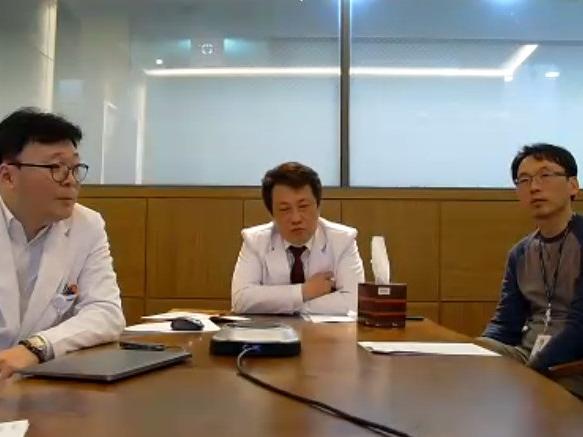
Dr. Wang-Jun Lee (centre) with colleagues, who spoke at the UNDRR webinar on COVID-19
By Denis McClean
GENEVA, 25 March, 2020 - Trace, test and treat. That sums up the strategy pursued by the Republic of Korea since it detected its first case of COVID-19 on January 20 and its first death on February 20, without imposing a lockdown.
The country has managed to keep its mortality rate at 1.4% compared to a global mortality rate of 4.34% despite an outbreak triggered by the activities of a religious organization in Daegu, Gyungbuk, which contributed to a spike in confirmed cases in late February.
The highest recorded number of infections on a single day in Seoul where 25 million people live, was 75 compared to 735 on a single day in Daegu, population 2.5 million. To date, 85% of the confirmed cases can be traced to Daegu.
The strategy pursued by Korea was explained in some detail today to an online audience of 900 disaster management and health specialists from 105 countries, by Dr. Wang-Jun Lee, CEO and Chairman of Myoungi Hospital and Executive Chairman of the Korean Hospital Association in a webinar organized by the UN Office for Disaster Risk Reduction’s office in Incheon, Korea and the World Health Organization.
“As of today, total confirmed cases are 9,137 among them 3,730 were discharged after recovery and 126 died. So until now fully recovered patients percentage is 41% and mortality rate is 1.4%,” said Dr. Lee who went on to describe the three distinct phases of the epidemiological curve in Korea.
From January 20 until February 17, the number of new infections was low but during phase two from February 18 till March 11, the curve started to trend upwards with patient number 31 associated with the religious group in Daegu. The curve peaked at the end of February and started to level off.
“Phase three started from March 12 till now when we have seen a downward trend in new cases with sporadic new clusters of infections,” he said.
Dr. Lee pointed out that unlike in China, more women (61.4%) than men (38.6%) were infected and the most infected demographic is aged 20-39 recorded 2,419 infections. These unique statistics were linked to members of the religious organization in Daegu.
Nonetheless, as in China, most deaths were among older patients with underlying diseases with a mortality rate of 10% for people in their 80s.
Dr. Lee outlined the Government's four main policies to prevent the spread of COVID-19.
The first policy is one of complete openness and transparency in sharing updated information on new infections through the Korean Centre for Disease Control, simultaneously with all stakeholders, including the media, on where, when and how the infections were discovered and investigated.